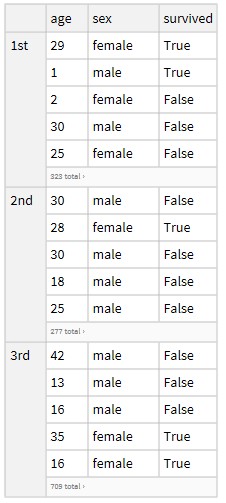In most cases, queries with keys using (key) names or slots will give the identical results.
However, in some cases the way Mathematica handles names or slots can lead to different results.
I ran into this example:
Query[All, All, Delete@"class"]@
GroupBy[#class &]@ExampleData[{"Dataset", "Titanic"}]
Which drops/deletes the class column as so:

If we try this using the Slot notation we get a different result:
Query[All, All, Delete@#class &]@
GroupBy[#class &]@ExampleData[{"Dataset", "Titanic"}]

I think there may be a sematic difference between the two notations. I suspect the name notation refers to the whole column (position), whereas the slot notation refers to the items in the Dataset under that name. In most cases, it will lead to equivalent result.